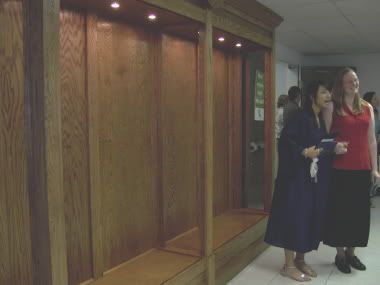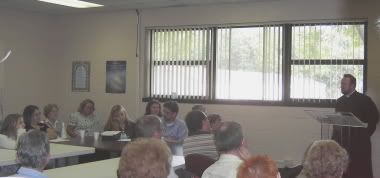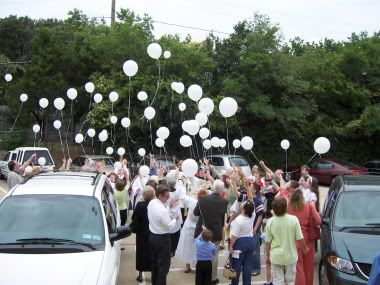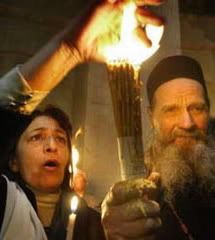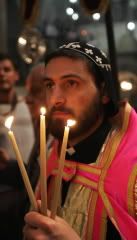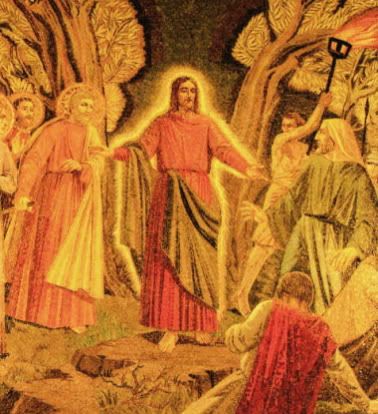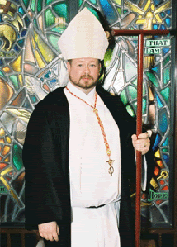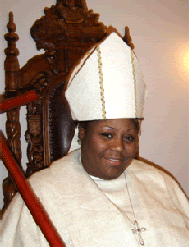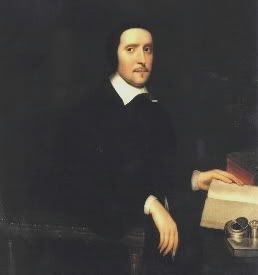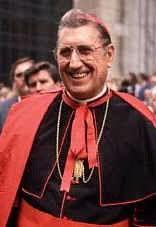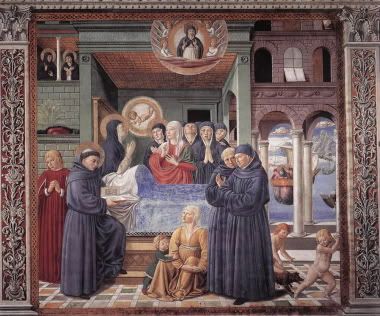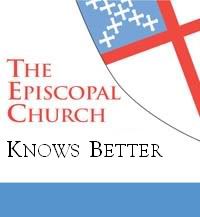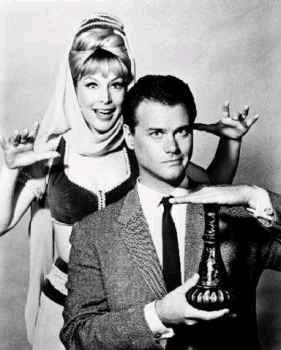
The Ascension of our Lord Jesus Christ into heavenly glory has always been, and will forever remain, a holy mystery of the Catholic faith. It is a celebration of great antiquity, and in the Episcopal Church, it is one of only seven holy days designated as a "Principle Feast." In the Eastern Church this feast was known as the
analepsis, "the taking up," and also as the
episozomene, "the salvation," denoting that by ascending into his glory, Christ completed the work of our redemption. The term used in the West, ascension, signifies that unlike Enoch, Elijah, and Mary, Christ was raised up by his own powers.
In Medieval times, there was an English custom of carrying a large banner at the head of the procession, which depicted a lion at the top and a dragon at the bottom, symbolizing the triumph of Christ in his ascension over the evil one. In some churches the scene of the Ascension was even vividly reenacted by elevating the figure of Christ above the altar through an opening in the roof of the church. In others, the figure of Christ was made to ascend, and that of the devil was made to descend. But in every celebration—all of which are an attempt to enter more deeply and contemplatively into the solemn mystery of our redemption—the liturgies celebrate the completion of the work of our salvation, the pledge of our glorification with Christ, and his triumphant entry into heaven with our glorified human nature .
For forty days, the risen Christ appeared to his disciples, showing them his that he is now alive, proving the reality of his new existence, and speaking of the kingdom and teaching them God’s truth. The Apostle Paul testified, in his first letter to the Corinthians, "I delivered to you as of first importance what I also received: that Christ died for our sins in accordance with the Scriptures, that he was buried, that he was raised on the third day in accordance with the Scriptures, and that he appeared to Cephas, then to the Twelve. Then he appeared to more than five hundred brothers at one time, most of whom are still alive, though some have fallen asleep.
Then he appeared to James, then to all the apostles. Last of all, as to one untimely born, he appeared also to me."
Tradition names Mount Olivet near Bethany as the place where Christ left earth. It is from there that the Lord, the eternal Word of God, returned to the place from which he came—the right hand of the Father. But he does not return the same; he returns with a body. Since he entered heaven in our flesh, as if in our name, it follows that in a sense we already sit with God in the heavenly places in Christ. It is a visible sign of what God planned
for us before the foundation of the world. In the Ascension, our humanity, our "flesh," has been "taken" by the Lord Jesus into the very heart of God.
This is profoundly good news. It means that we are more deeply valued, loved, and treasured by God than we may have known had Christ not departed for glory. We grow and change. We move from place to place. We endure disease and violence. We live with the sometimes painful rhythm of suffering and death. We make mistakes and we commit sins, knowingly and unknowingly. But through it all, we carry this vision of our humanity being taken up by Christ into God, caught up in an ultimate, renewed purpose for our lives.
It means that God loves, values, holds, and will transform our fragile and broken humanity in Christ. It means that, at the Ascension, Jesus took all of human life, which he cared for so deeply, and brought it "into the heavenly places." This includes the suffering refugee, the abused child or spouse, the victim of war or terror, the lonely one in the nursing home, the one who struggles with depression or a lost sense of worth and value, those who are sick, all who are in difficult transitions in life.
Christ shows us all where we ultimately belong.
It is unthinkable that the appearances of Jesus should just continue indefinitely or that they should grow fewer and fewer until finally they petered out. That would have effectively wrecked the faith of men. There had to come a day of dividing when the Jesus of earth finally became the Christ of heaven, to be worshipped in spirit and in truth.
To the disciples the ascension was obviously an ending in once sense. The days when their faith was put in someone whose physical presence was seen and heard in their midst were over. Now they were linked to someone who who had passed through the veil and was forever independent of space and time, triumphing above all creation. Jesus is their link from one to the other. So to the disciples, it was equally a beginning.
They did not leave the scene heart-broken; they left it with great joy, because now they knew that they had a Master from whom nothing could separate them any more. "I am sure," St Paul wrote to the Church of Rome, "that nothing—nothing in life or death—can separate us from the love of God in Christ Jesus our Lord." Further, the ascension gave the disciples the certainty that they had a friend, not only on earth, but also in heaven. This same fact highlights their new role as his mystical Body that remains on earth.
At the end of the ascension story in Acts the disciples receive a promise by two men in white robes that there will be a homecoming. This humanity that Jesus has "taken up" to the right hand of God returns to us in glory. We can take this to mean that while in Christ’s Ascension the world
as we know it is constantly ending, and the world
as God knows it is constantly coming.
Those early disciples were filled with joy, the same joyful expectation that grew within the blessed Virgin Mary she received the word from the angel. Perhap they understood for the first time the message that Jesus had spoken to them in difficult moments in the past—"It is better for you that I go," for "I go to prepare a place for you."
As instructed, those early disciples went back to Jerusalem and St Luke tells us they were continually in the Temple, praising God as they awaited the promised outpouring of the Holy Spirit by holding the first novena—a nine-day vigil of prayer. They were preparing a place in their hearts for the Holy Spirit.
The Ascension of our Lord will always remain for us a cause of joy and celebration. It will also remain a holy mystery—both about our Lord and about ourselves. Our last view of the risen Christ remains fixed in our mind’s eye—solemn, stately, loving and dignified, his hands raised in blessing. It will remain a mystery for us, but not an intangible one. The mystery of the Ascension of our Lord is not an abstraction that challenges the imagination, but a reality presented to the soul, for all the glories of the risen Christ have ascended into the sacraments.



